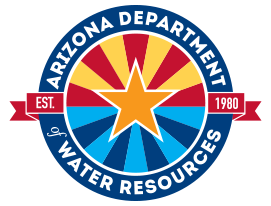NEWS NOTES ON SUSTAINABLE WATER RESOURCESCentral Arizona Projecthttps://www.cap-az.com/The Colorado River Basin continues to experience drought ...
Published on by Tim Smith, Employee at Retiree & P/T Consultant

Central Arizona Project
https://www.cap-az.com/
The Colorado River Basin continues to experience drought and the impacts of hotter and drier conditions. Based on the Jan. 1 projected level of Lake Mead at 1,065.85 feet above sea level, the U.S. Secretary of the Interior has declared the first-ever Tier 1 shortage for Colorado River operations in 2022. This Tier 1 shortage will result in a substantial cut to Arizona’s share of the Colorado River — about 30% of Central Arizona Project’s normal supply; nearly 18% of Arizona’s total Colorado River supply; and less than 8% of Arizona’s total water use. Nearly all the reductions within Arizona will be borne by Central Arizona Project (CAP) water users. In 2022, reductions will be determined by the CAP priority system – the result will be less available Colorado River water for central Arizona agricultural users.
The Central Arizona Project (CAP) is a 336 mi (541 km) diversion canal in Arizona in the southern United States. The aqueduct diverts water from the Colorado River to the Bill Williams Wildlife Refuge south portion of Lake Havasu near Parker into central and southern Arizona. CAP is managed and operated by the Central Arizona Water Conservation District (CAWCD). It was shepherded through Congress by Carl Hayden.
The Colorado River Aqueduct, or CRA, is a 242 mi (389 km) water conveyance in Southern California in the United States, operated by the Metropolitan Water District of Southern California (MWD). The aqueduct impounds water from the Colorado River at Lake Havasu on the California-Arizona border, west across the Mojave and Colorado deserts to the east side of the Santa Ana Mountains. It is one of the primary sources of drinking water for Southern California.
Originally conceived by William Mulholland and designed by Chief Engineer Frank E. Weymouth of the MWD, it was the largest public works project in southern California during the Great Depression. The project employed 30,000 people over an eight-year period and as many as 10,000 at one time.
The system is composed of two reservoirs, five pumping stations, 62 mi (100 km) of canals, 92 mi (148 km) of tunnels, and 84 mi (135 km) of buried conduit and siphons. Average annual throughput is 1,200,000 acre⋅ft (1.5 km3).
NOTE: More information on Sustainable Water Resources is available at https://sites.google.com/site/sustainablewaterresources/